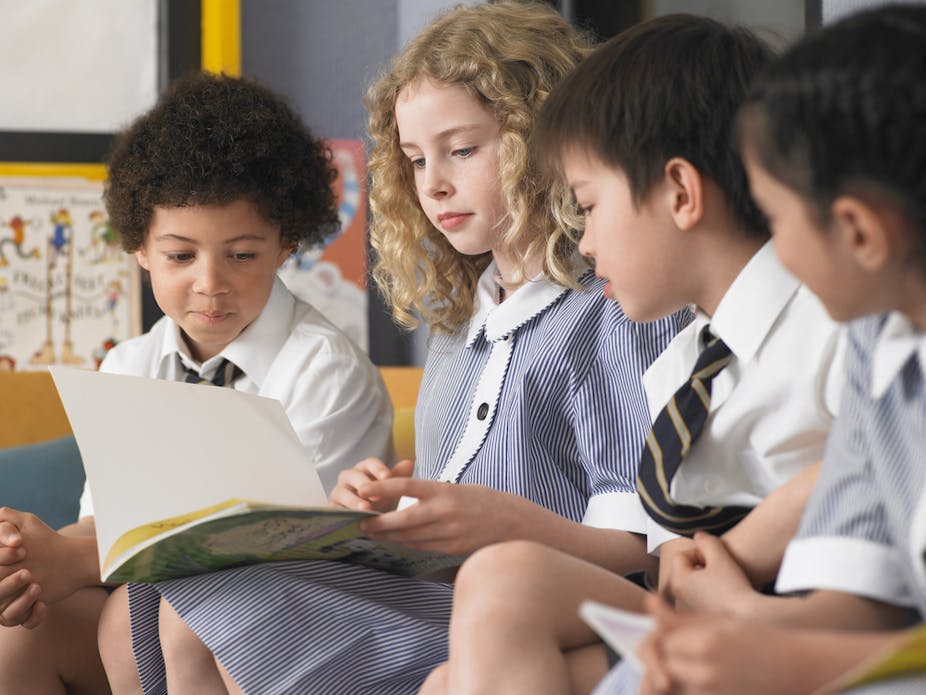The first few years of school are tough for any child. Moving from the relatively unstructured activities of preschool to the formal requirements of school is a big step. Children require high levels of social and emotional support and understanding from the school environment.
This becomes even more complex when we consider the increasing rates of multiculturalism and diversity among children in Australian schools. At least half a million children attend school in Australia and almost 15% of this number are bilingual children from a diverse socio-cultural background.
Not only do schools have to be aware of the cultural and social variations in how children communicate with adults and peers, they also need to be prepared to understand the emotional and social challenges of children from diverse socio-cultural backgrounds.
Cultural diversity and children’s socio-emotional development
Research shows children’s development is highly influenced by social and cultural practices. My research has focused on understanding culturally specific as well as universal aspects of children’s social and cognitive development. It has led to some intriguing findings.
It has shown that children from disparate cultural and social backgrounds perform differently in cognitive tasks – for instance, their understanding of how knowledge is gained. It also shows parents encourage children to communicate with others in different ways depending on their cultural background and social diversity.

For example, in Eastern cultures parents often encourage their children to be silent unless they are directly spoken to, not to argue with adults and not to speak their minds. This is in contrast to most Western cultures where such attributes may often be regarded as exhibiting shyness and not so highly valued. Similarly, research on Aboriginal and Torres Islander families shows that parental and social values significantly differ not only from Western families, but also within different Aboriginal communities.
Findings on developmental differences for children from different European countries, such as the UK, France, Sweden and Italy, also show, for instance, that children gain social and cognitive knowledge within different timeframes depending on where they come from. Yet, in a multicultural country such as Australia, all of these children go to school together.
So what can teachers do?
These results are intriguing. They make us think, if we prepare our children with different cultural values and socialisation practices, what happens when they enter school, a time of rapid change in social expectations for children?
Reports show that teachers consider children’s ability to regulate their emotions effectively to be even more important than their skills using pen and pencil upon entry to school. Despite this, teachers often say that they do not feel well enough trained to deal with children’s emotional needs. Most of their training has focused on particular school tasks that children must perform.
Teachers’ lack of confidence in dealing with children’s emotional needs can be even more dramatic when considering the cultural differences among children. If teachers and schools are unaware of and unprepared for accepting and understanding socio-cultural diversity, children’s behaviour can easily be misunderstood. Consequently, it can become an emotional and social burden.
A good example is the issue of “closing the gap” in Australia, which has been discussed for over 50 years now. Yet research still shows that children from Aboriginal and Torres Islander backgrounds feel isolated, not understood and not valued at schools. While education systems are trying hard to enrich the experience of schooling for all children, there is a long way to go.
It is important that policy makers, educators, teachers and parents pay more attention to the diversity in children’s social and emotional development. We need to more rigorously integrate research, specifically investigations of the development of socially and culturally diverse children (including Aboriginal and Torres islander children) in teachers’ pre-service education and in education policies in Australia.
In the meantime, it is important for teachers to acknowledge this lack of training and try to avoid making conclusions based on their knowledge or assumptions of how children should perform, especially children from diverse social and cultural backgrounds and during early years. It would be helpful to keep in mind that what we don’t value much in one culture might be crucial in another.

